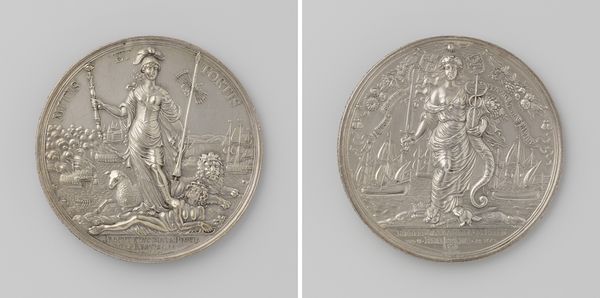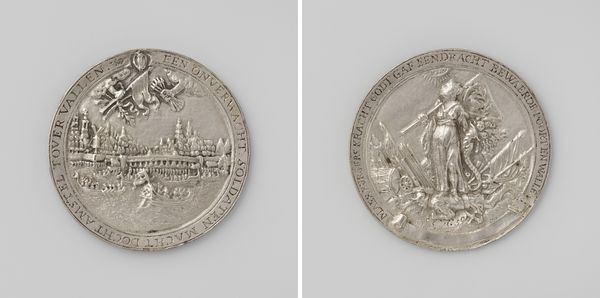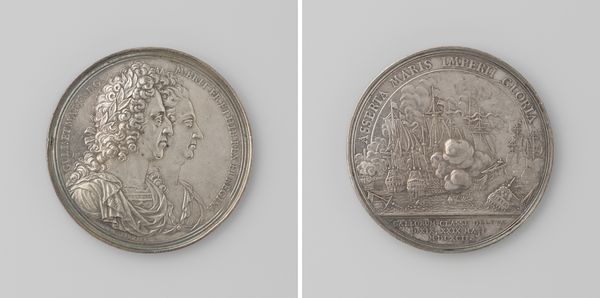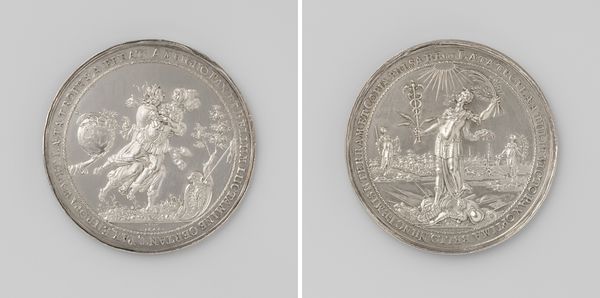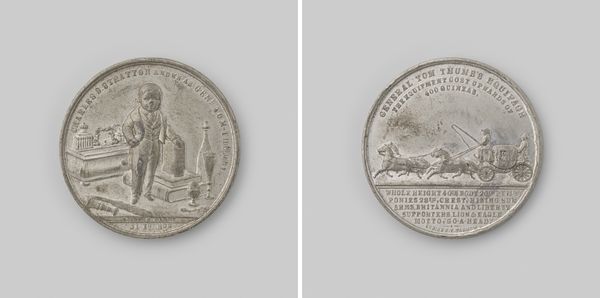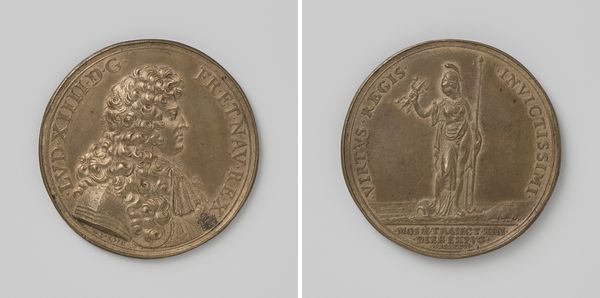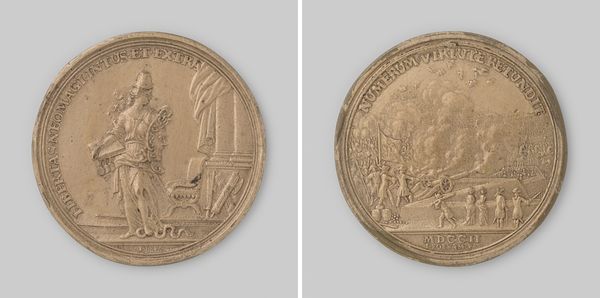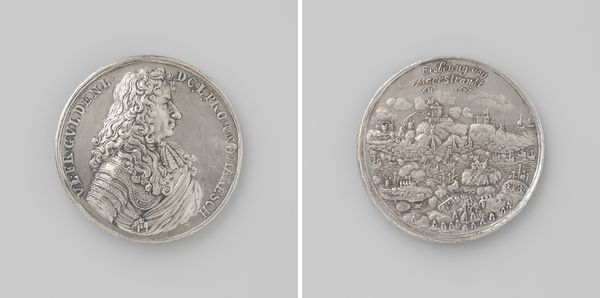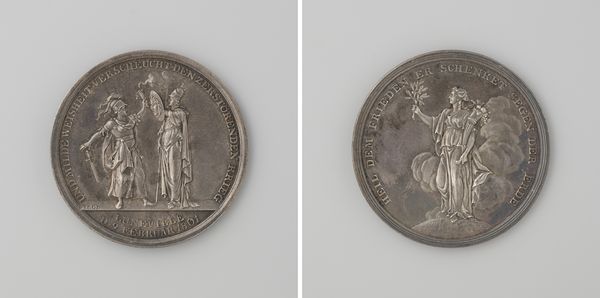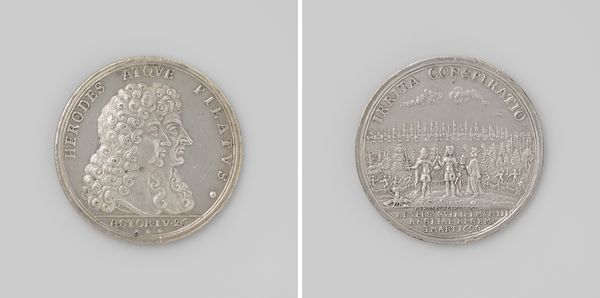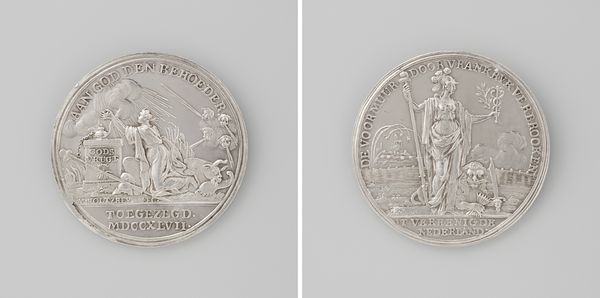
metal, relief, sculpture, engraving
#
portrait
#
medal
#
baroque
#
metal
#
relief
#
sculpture
#
history-painting
#
engraving
Dimensions: diameter 6.3 cm, weight 80.69 gr
Copyright: Rijks Museum: Open Domain
Editor: This is an engraving in metal depicting the "Marriage of Prince Willem II to Mary of England" by Sebastian Dadler, from 1641. The detail is just incredible for such a small, circular surface. What strikes me is the formal and almost theatrical presentation of this royal event. How do you interpret this work? Curator: It's tempting to simply see this as a historical record, but Dadler's work exists within a very specific socio-political context. Consider the use of iconography – the radiant dove representing divine approval, the inclusion of military symbols on the reverse, the Latin inscriptions… It’s carefully crafted propaganda. Who do you think this work would have been for? Editor: I suppose the elite, those connected to the court and invested in maintaining power? Curator: Precisely. It reinforces the legitimacy of the union and the strength of the Dutch and English alliance at a time of considerable political upheaval in Europe. It subtly reinforces ideas of patriarchy and royal bloodlines. How does that impact how you view it? Editor: I see it differently now. It's not just a celebration of love, but a calculated assertion of power using very specific visual rhetoric of the era. All that information can’t be easily read through just an aesthetic appreciation. Curator: Exactly. And remembering that the marriage itself likely served the interests of the state more than those of the couple also reframes how we view this object. It serves as a useful reminder of the importance of understanding artwork's place within social, political, and historical moments, which gives the aesthetic a whole new layer of depth. Editor: Absolutely. Looking at art in context—understanding the who, what, and why—reveals so much more than I initially grasped.
Comments
No comments
Be the first to comment and join the conversation on the ultimate creative platform.
